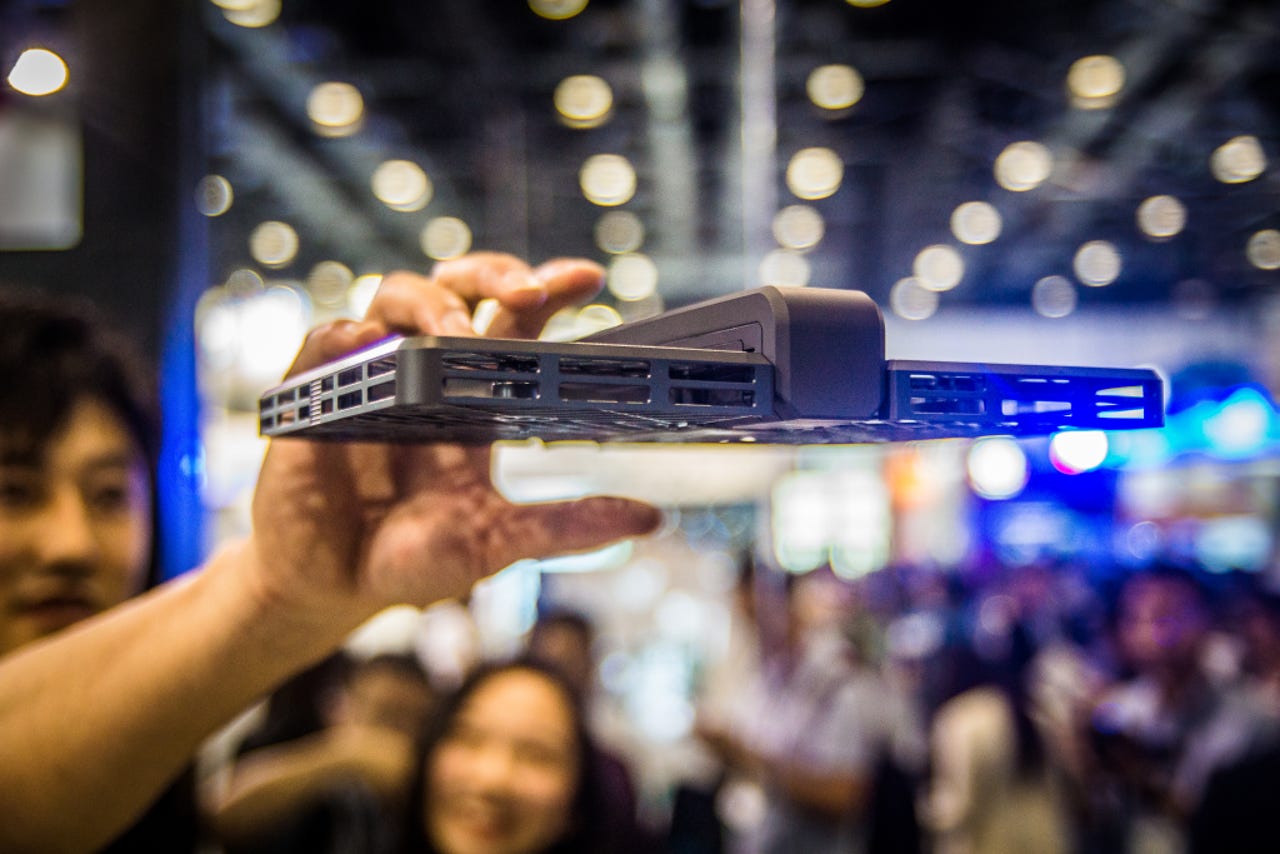AI-powered selfie drone takes 13MP photos and 4K video, wows GMIC Beijing 2016

CEO MQ Wang shows off the Hover Camera at GMIC Beijing 2016.
MQ Wang is an outlier in the tech industry. He prefers to be spend as much time outside as possible.
A few years ago while he was finishing his PhD at Stanford, Wang fell for a documentary of Jon Muir, who walked 1600 miles alone across Australia and filmed the whole experience by himself. The problem was that Muir had to keep walking ahead and setting up the camera and then retracing his steps. Wang, who focused his doctorate on machine learning and natural language processing, thought there had to be a way to automate the camera.
That was the initial inspiration for what became Hover Camera--an AI-powered self-flying drone that was the biggest hit of the GMIC Beijing 2016 trade show.
The event, sometimes called "The CES of China," is taking place April 28 to May 2 at the China National Convention Center, just steps away from where the 2008 Beijing Olympics wowed the world.
Hover Camera supplied the wow factor for GMIC. After Wang, the CEO and co-founder, did a short on-stage demo early in the show, he had tech industry executives, VCs, and attendees tugging at him all week to talk about the product. No booth was more crowded or had more buzz than the black Hover Camera stall where demos of the product whirled around all day.
That's not bad for a product and a company that quietly announced themselves to the public just two days before GMIC started.
SEE: With Cheetah Robotics launch, software giant wants to create China's first global tech brand
Here's what the Hover Camera can do:
- Takes 13MP photos and 4K video: It has 32GB of storage, so there's room to store plenty of files.
- Hovers automatically: You simply toss Hover Camera into the air and it flies nearby.
- Uses AI face tracking: Automatically locks onto a face and body using artificial intelligence.
- Does auto-steadying: On the bottom of Hover Camera, it has a sonar sensor and an extra camera that it uses to steady itself, even against the wind.
- Has light, durable casing: The carbon fiber body has a soft rubberized coating, making it strong, light, and safe.
- Automatically stabilizes images: Intelligently and digitally does image stabilization for both photos and video.
- Offers 360 videos: Can spin and take 360-degree panoramic videos.
- Does not require FAA registration: Only weighs 238 grams, so it's below the 250 grams where the United States FAA requires drone registration for hobbyists.
This three-minute video shows Hover Camera in action:
The final version of the product will be released this summer, according to Francis Bea, Hover's PR lead. Pricing was not announced at GMIC.
Several others have tried this selfie drone concept. Most notably, Zano became Europe's most lucrative Kickstarter campaign in 2014, raising $3.5 million for an autonomous quadcopter camera that fit in the palm of your hand. Unfortunately, Zano went bankrupt a year later and didn't deliver to its backers.
Like Zano, Lily Camera is another selfie-taking quadcopter--albeit a much more viable one. Lily has sold $34 million in pre-orders at $799/each since mid-2015. It does 1080p video and 12MP photos and saves them to a 4GB microSD card, which is upgradeable.
Since Hover Camera is offering stronger specs, you'd have to expect that its price tag will be equal to or higher than Lily's--although it may be helped by the fact that hardware costs decrease over time and Hover's product cycle is a year later.
The other thing Hover has going for it is its team. Both of the co-founders graduated with PhDs from Stanford. Wang did his in computer science and his business partner, Tony Zhang, did his in mechanical engineering. Both Wang and Zhang were formerly software engineers at Twitter and Wang also served a stint at Alibaba as a data scientist.
The Hover Camera booth at GMIC Beijing 2016 won the show based on buzz and crowds.
They launched the company behind Hover Camera, Zero Zero Robotics, two years ago and had been in stealth mode until April 26. They have grown the team to 80 people, with offices in Beijing, Shenzhen, Hangzhou, and San Francisco, and have raised $25 million in funding, including a $23 million Series A round backed by IDG, GSR Ventures, ZhenFund, ZUIG and others.
In an interview with ZDNet, Wang made it clear that this is not a one product company.
"We want to build personal robotics for everyone," said Wang, "and this is just a first step."
While the Zero Zero Robotics team is aiming Hover Camera at consumers, a lot of businesses have emailed to inquire about the product, said Bea. It's easy to imagine SMBs that can't afford a full-time or contract camera operator to use the Hover Camera for filming promo videos or social media clips.
The Hover Camera sports a much more elegant design than its competitors. Just keep an eye on the price tag when it's revealed later this year.
Also see
- Coffee delivery by drone for $3? It's coming
- China makes a play at personal robots
- Inspection-by-drone company gets $3.25M in energy sector funding
- Domino's DRU pizza delivery robot by the numbers
- Can the presence of a robot affect whether humans behave ethically? (TechRepublic)
- How to prepare your business to benefit from AI (TechRepublic)
